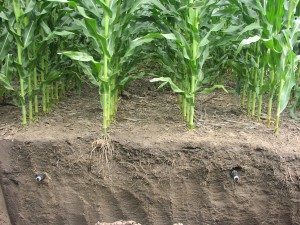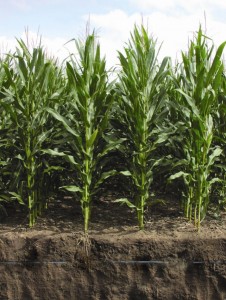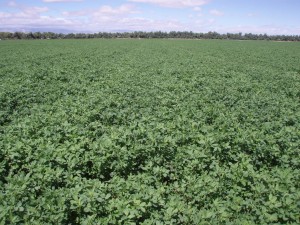 Yesterday – July 10, 2014 – The Toro Company celebrated its 100th anniversary as more than 2,000 employees, retirees, channel and business partners, and other valued guests gathered at the company’s headquarters in Bloomington, Minnesota. Joining Michael J. Hoffman, Toro’s chairman and chief executive officer, as he remarked on the company’s rich history and the individuals and innovations that helped shape the company’s success was Minnesota Governor Mark Dayton, who presented the official proclamation declaring “Toro Day” in the State of Minnesota, and Bloomington Mayor Gene Winstead.
Yesterday – July 10, 2014 – The Toro Company celebrated its 100th anniversary as more than 2,000 employees, retirees, channel and business partners, and other valued guests gathered at the company’s headquarters in Bloomington, Minnesota. Joining Michael J. Hoffman, Toro’s chairman and chief executive officer, as he remarked on the company’s rich history and the individuals and innovations that helped shape the company’s success was Minnesota Governor Mark Dayton, who presented the official proclamation declaring “Toro Day” in the State of Minnesota, and Bloomington Mayor Gene Winstead.
“As we celebrate our first 100 years, it was truly gratifying to be surrounded by many of those who played such a significant role in the company’s success,” said Hoffman. “We are honored to have such talented employees around the world and individuals who have served the company throughout our history, along with great channel and business partners, who work every day to serve our customers and help advance our efforts in the industry. And, I especially want to thank Minnesota Governor Mark Dayton and Bloomington Mayor Gene Winstead for joining our centennial celebration and honoring the people of Toro.”
Continue reading
 As California faces a historic drought, many farmers are relying on groundwater reserves to carry them through the dry season. Pumping groundwater is currently unregulated in California (that could soon change), and drawing on reserves now could cause shortages in the future. Sustainability-minded farmers are looking ahead and using an arsenal of ways to save water. Here are just a few:
As California faces a historic drought, many farmers are relying on groundwater reserves to carry them through the dry season. Pumping groundwater is currently unregulated in California (that could soon change), and drawing on reserves now could cause shortages in the future. Sustainability-minded farmers are looking ahead and using an arsenal of ways to save water. Here are just a few: Drip Irrigation has typically been used in high-value fruit, nut, and vegetable crops. Recently, it has become popular in field crop applications, including corn/soybean rotations and alfalfa, cotton, and processing tomatoes. USDA’s recent Farm and Ranch Irrigation Survey reported 3.76 million acres in the U.S. are under drip. This acreage is expected to be significantly higher in the 2013 report, which will be released this fall.
Drip Irrigation has typically been used in high-value fruit, nut, and vegetable crops. Recently, it has become popular in field crop applications, including corn/soybean rotations and alfalfa, cotton, and processing tomatoes. USDA’s recent Farm and Ranch Irrigation Survey reported 3.76 million acres in the U.S. are under drip. This acreage is expected to be significantly higher in the 2013 report, which will be released this fall. With drought gripping much of the Great Plains and western states, and with groundwater reserves declining and water regulations increasing, growers and their CCAs are finding ways to get more crop per drop with precision irrigation.
With drought gripping much of the Great Plains and western states, and with groundwater reserves declining and water regulations increasing, growers and their CCAs are finding ways to get more crop per drop with precision irrigation. Micro-sprinklers have long been used to provide climate control and irrigate fruit, nut and cover crops. Now, micro-sprinklers can be used as part of an integrated pest management (IPM) plan in row crops, as well. By placing a grid of micro-sprinklers above the crop and operating it a few times a week, dust is washed off the leaves and humidity is increased – suppressing harmful pests and encouraging beneficial insects. For example, mites and spider mites favor hot, dusty environments, whereas beneficial predatory insects, such as persimilis, thrive best where humidity levels are between 60 to 90 percent. By applying a light application of water to the crop several times a week, dust, mites and webbing are washed off while the resulting increased humidity encourages beneficial predator species.
Micro-sprinklers have long been used to provide climate control and irrigate fruit, nut and cover crops. Now, micro-sprinklers can be used as part of an integrated pest management (IPM) plan in row crops, as well. By placing a grid of micro-sprinklers above the crop and operating it a few times a week, dust is washed off the leaves and humidity is increased – suppressing harmful pests and encouraging beneficial insects. For example, mites and spider mites favor hot, dusty environments, whereas beneficial predatory insects, such as persimilis, thrive best where humidity levels are between 60 to 90 percent. By applying a light application of water to the crop several times a week, dust, mites and webbing are washed off while the resulting increased humidity encourages beneficial predator species. Yesterday – July 10, 2014 –
Yesterday – July 10, 2014 –  On Friday, July 25, 2014 at 1:00PM (Pacific Time), the Grange Network will be hosting a 60-minute, FREE webinar to discuss how irrigation uniformity and management affect plant health. Keith Backman, Consultant Manager of Dellavalle Laboratory will lead the discussion.
On Friday, July 25, 2014 at 1:00PM (Pacific Time), the Grange Network will be hosting a 60-minute, FREE webinar to discuss how irrigation uniformity and management affect plant health. Keith Backman, Consultant Manager of Dellavalle Laboratory will lead the discussion. The use of flood and center pivot irrigation of crops via the waters of the Ogallala Aquifer is as hot a discussion topic as the current drought.
The use of flood and center pivot irrigation of crops via the waters of the Ogallala Aquifer is as hot a discussion topic as the current drought. At Toro, we recently added
At Toro, we recently added  Alfalfa growers may be encouraged to take a fresh look at
Alfalfa growers may be encouraged to take a fresh look at  We are excited to announce the latest upgrade to our popular AquaFlow
We are excited to announce the latest upgrade to our popular AquaFlow